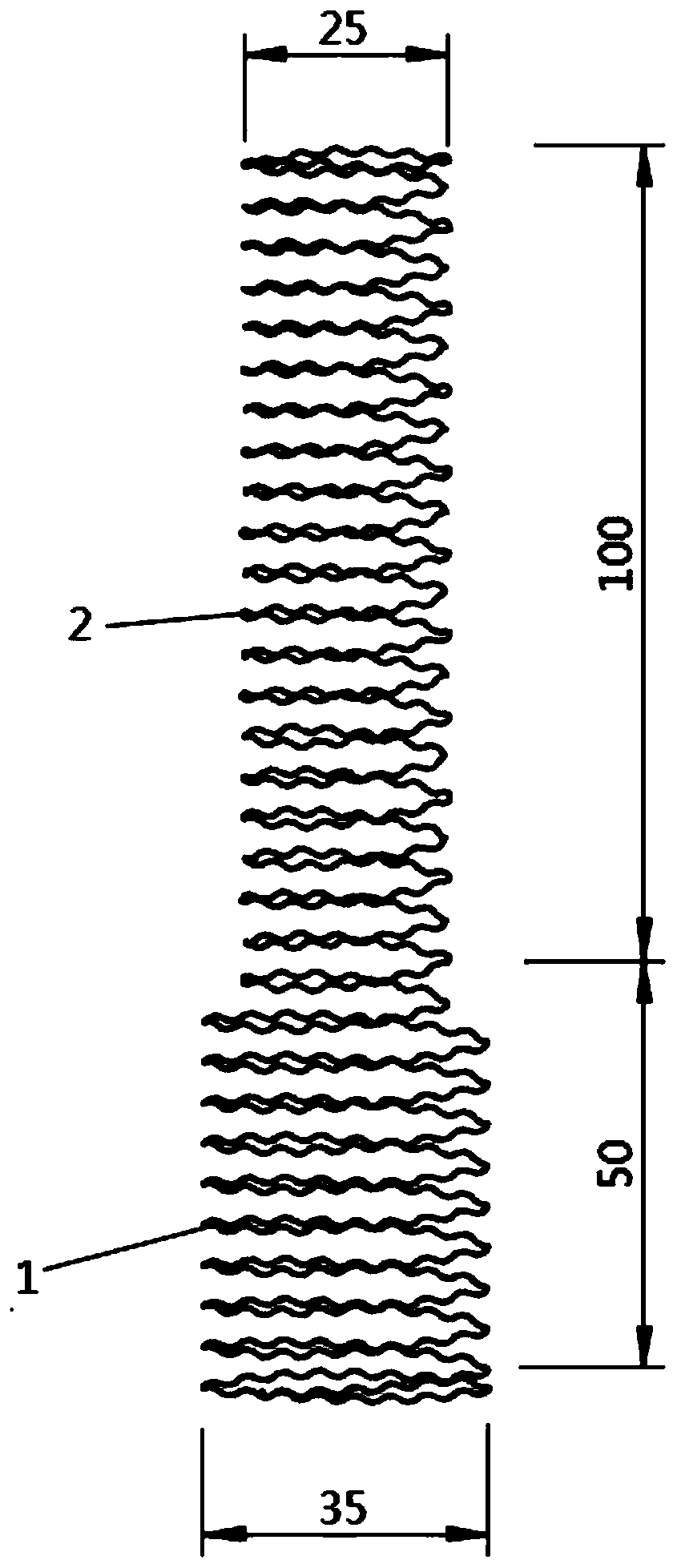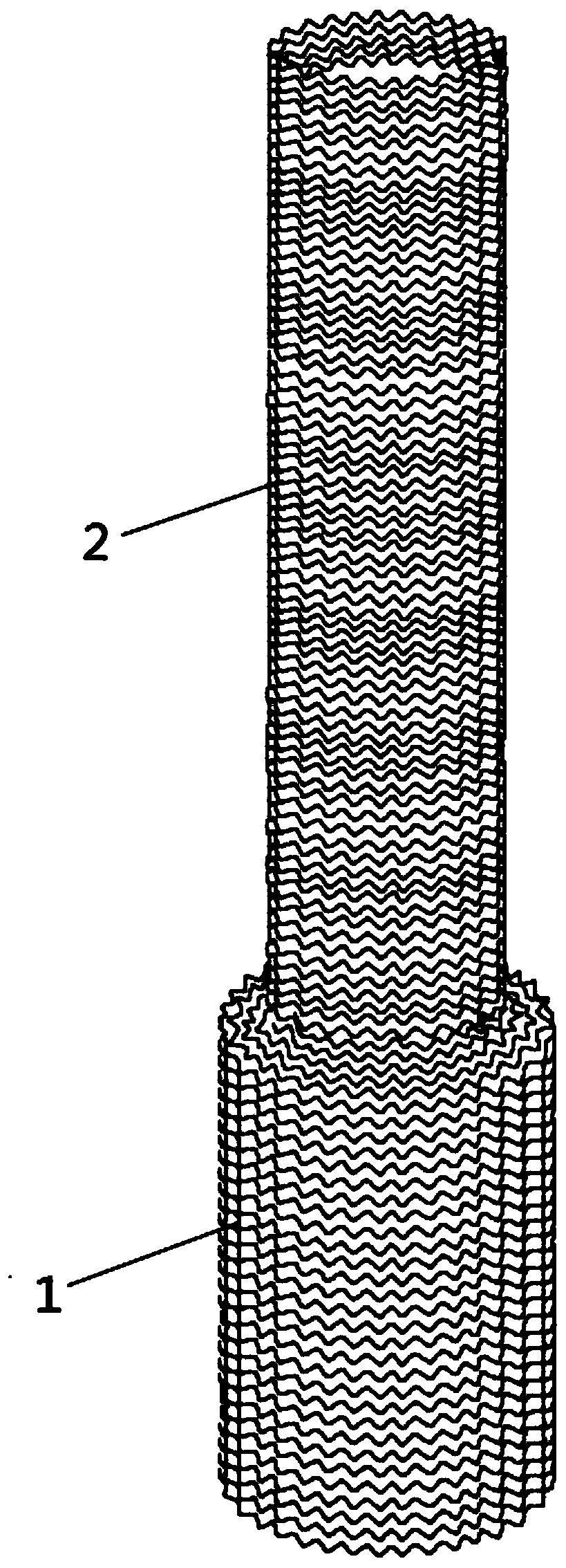Nickel-titanium alloy stent for treating megacolon
A nickel-titanium alloy and Hirschsprung technology, applied in stents, medical science, prostheses, etc., can solve problems such as physical injuries in children, and achieve the effects of promoting defecation, eliminating abdominal distension, and relieving spasm and stenosis
- Summary
- Abstract
- Description
- Claims
- Application Information
AI Technical Summary
Problems solved by technology
Method used
Image
Examples
Embodiment 1
[0021] Such as figure 1 As shown, the nickel-titanium alloy stent used for the treatment of Hirschsprung’s disease is integrally bent into a nickel-titanium alloy that is longitudinally helical spring-like and transversely wavy. The stent includes a proximal expansion section 1 and a distal rectal section 2. The diameter of the distal dilated segment 1 is 35 mm, and the diameter of the distal rectal segment 2 is 25 mm.
[0022] The bracket will be plastically deformed at 20-40°C.
[0023] The length of the stent is consistent with the length of the pathological bowel according to the imaging diagnosis, and the length of the stent in this embodiment is 150 mm.
[0024] When in use, the pre-made stent was placed into the spasm segment of the colon through a colonoscope, and the end of the distal rectal segment 2 was sutured and fixed at 0.5 cm from the anal dentate line.
[0025] At present, there are a large number of clinical cases in which colorectal cancer has been success...
Embodiment 2
[0038] A nickel-titanium alloy stent for the treatment of Hirschsprung’s disease. The stent is bent into a nickel-titanium alloy that is longitudinally helical spring-like and transversely wavy. The stent includes a proximal expansion section 1 and a distal rectal section 2. The proximal expansion section 1 has a diameter of 40 mm and the distal rectal segment 2 has a diameter of 25 mm.
[0039] The bracket will be plastically deformed at 20-40°C.
[0040] The length of the stent is consistent with the length of the pathological bowel according to the imaging diagnosis, and the length of the stent in this embodiment is 100 mm.
[0041] When in use, the pre-made stent was placed into the spasm segment of the colon through a colonoscope, and the end of the distal rectal segment 2 was sutured and fixed at 1.0 cm from the anal dentate line.
Embodiment 3
[0043] A nickel-titanium alloy stent for the treatment of Hirschsprung’s disease. The stent is bent into a nickel-titanium alloy that is longitudinally helical spring-like and transversely wavy. The stent includes a proximal expansion section 1 and a distal rectal section 2. The proximal expansion section 1 has a diameter of 35 mm and the distal rectal segment 2 has a diameter of 22 mm.
[0044] The bracket will be plastically deformed at 20-40°C.
[0045] The length of the stent is consistent with the length of the pathological bowel according to the imaging diagnosis, and the length of the stent in this embodiment is 140mm.
[0046] When in use, the pre-made stent was placed into the spasm segment of the colon through a colonoscope, and the end of the distal rectal segment 2 was sutured and fixed at 0.8 cm from the anal dentate line.
PUM
| Property | Measurement | Unit |
|---|---|---|
| diameter | aaaaa | aaaaa |
| diameter | aaaaa | aaaaa |
| length | aaaaa | aaaaa |
Abstract
Description
Claims
Application Information
 Login to View More
Login to View More - R&D
- Intellectual Property
- Life Sciences
- Materials
- Tech Scout
- Unparalleled Data Quality
- Higher Quality Content
- 60% Fewer Hallucinations
Browse by: Latest US Patents, China's latest patents, Technical Efficacy Thesaurus, Application Domain, Technology Topic, Popular Technical Reports.
© 2025 PatSnap. All rights reserved.Legal|Privacy policy|Modern Slavery Act Transparency Statement|Sitemap|About US| Contact US: help@patsnap.com


